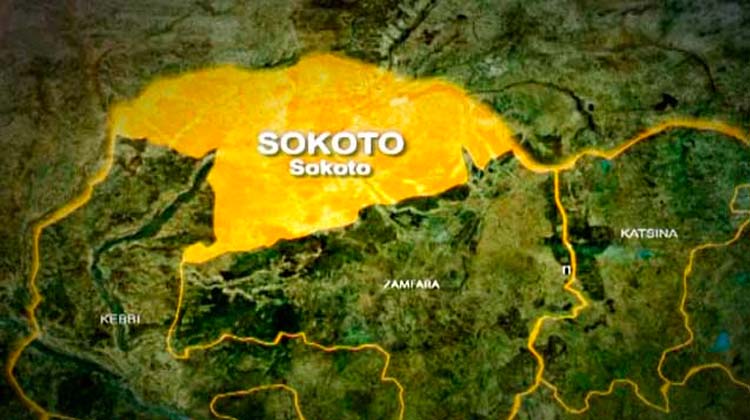Israel has confirmed it presented Hamas with a truce proposal that could immediately lead to a six-week ceasefire in Gaza, after the United States said the deal could pave the way to ending the war.
Israeli Prime Minister Benjamin Netanyahu said Friday he had authorized his negotiators to offer the deal to Hamas.
“The Israeli government is united in the desire to return our hostages as soon as possible and is working to achieve this goal,” the statement said.
“Therefore, the prime minister has authorized the negotiating team to present an outline for achieving this goal, while insisting that the war will not end until all of its goals are achieved, including the return of all our hostages and the destruction of Hamas’s military and governmental capabilities.”
Earlier Friday, U.S. President Joe Biden laid out details of an agreement he described as “a roadmap to an enduring ceasefire and the release of all hostages.” The deal would be implemented in three phases, the first of which would bring the ceasefire.
“That offer is now on the table,” Biden said during a White House briefing.
The proposal comes as Israel grows increasingly isolated from some of its strongest allies and the wider international community over its ongoing attacks on the city of Rafah in southern Gaza, which have killed civilians and continued in spite of an order from the United Nations’ top court to stand down.
Biden said he recognizes there are some in Israel who want to see the war continue “indefinitely,” but said Hamas is no longer capable of leading another attack like the surprise assault on Oct. 7 after nearly eight months of war. Further conflict, he said, will drain Israel’s economy and harm its international standing.
“I’ve urged leadership in Israel to stand behind this deal, despite whatever pressure comes,” Biden said.
“It is time for this war to end,.”
The international community is growing more critical of Israel’s military operation in Gaza after accusations of genocide, talk of arrest warrants and airstrikes that killed civilians in Rafah. Andrew Chang breaks down the global shift in stance, and how Israel is responding to the pressure.
3-phase proposal
Biden said the proposed deal, if Hamas accepts it, would play out in three stages.
Phase 1 would immediately bring a “complete ceasefire” in the war, with Israeli forces withdrawing fully from Gaza. A number of hostages, including women, children, the elderly and the wounded, would be released in exchange for hundreds of Palestinian prisoners. Aid deliveries to the devastated enclave would “surge” to 600 trucks per day, Biden said.
During the second phase, Hamas and Israel would negotiate terms of a permanent end to hostilities. All remaining hostages, including men and soldiers, would also be released.
“The ceasefire will still continue as long as negotiations continue,” Biden said.
During Phase 3, reconstruction plans would begin in Gaza and the remains of any hostages who were killed would be returned to their families.
Biden said Qatar had relayed the proposal to Hamas.
- Just Asking wants to know: What questions do you have about the possibility of a ceasefire between Israel and Hamas at this point in the war? What would you like to know about the role of the international community in peace negotiations? Fill out the details on this form and send us your questions ahead of our show on June 1.
A hostage proposal put forward earlier this year called for the release of sick, elderly and wounded hostages in Gaza in exchange for a six-week ceasefire that could be extended to allow for more humanitarian aid to be delivered into the enclave.
The proposed deal fell apart earlier this month after Israel refused to agree to a permanent end to the war as part of the negotiations and ramped up an assault on Rafah.
Hamas said on Thursday it had told mediators it would not take part in more negotiations during ongoing aggression, but was ready for a “complete agreement,” including an exchange of hostages and prisoners if Israel stopped the war.
Israel presses forward in Gaza
On the ground in Gaza, Israeli forces said they had ended combat operations in the Jabalia area of north Gaza on Friday after destroying more than 10 kilometres of tunnels during days of intense fighting that included over 200 airstrikes.
During the operation, troops recovered the bodies of seven of the hostages, the military said, without elaborating on their identities.

Hamas-led militants abducted some 250 people when they stormed over the border into Israel on Oct. 7 last year, killing around 1,200 people, according to Israeli government tallies. About 120 people remain unaccounted for.
Over 36,000 Palestinians have been killed in Israel’s air and land war since then in Gaza, according to health officials there, and much of the densely populated enclave lies in ruins.
Front Burner26:49When Israel investigates itself, what happens?
Rafah, the only major city in Gaza yet to have been taken by Israeli forces, had been a refuge for more than one million Palestinians driven from their homes by fighting in other areas of the small coastal enclave, but most have now left after being told to evacuate ahead of the Israeli operation.
Hundreds of thousands are now living in tents and other temporary shelters in a special evacuation zone in nearby Al-Mawasi, a sandy, palm tree-dotted district on the coast, as well as areas in central Gaza.
Israel has signalled for weeks that it intended to mount an assault on the remaining Hamas battalions in Rafah, drawing international condemnation and warnings even from allies like the United States not to attack the city while it remained full of displaced people.
The risks were underlined on Sunday when an Israeli airstrike targeting two Hamas commanders outside the city set off a blaze that killed at least 45 people sheltering in tents next to the compound hit by the jets.
As the war has dragged on and Gaza’s infrastructure has been widely demolished, malnutrition has spread among the 2.3 million population as aid deliveries have slowed to a trickle, and the United Nations has warned of incipient famine.






